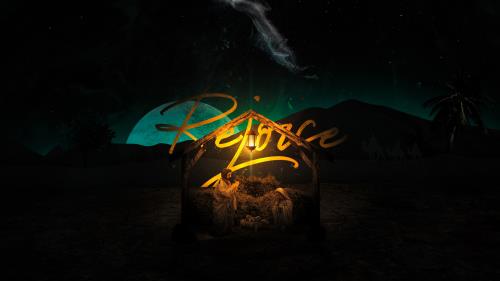-
God Came To Earth As A Baby
Contributed by The Rev Deniray Mueller on Dec 18, 2019 (message contributor)
Summary: God came down to earth as a helpless, tiny baby
This week we are not going to add additional characters to the crèche, but talk about what the Christmas story really means – to us and to the world.
The story of Christmas begins, not with the manger of Bethlehem, but many thousands, perhaps millions of years before, in the mind and heart of God.
“I’m lonely,” James Weldon Johnson has God say in his play, God’s Trombones. “I think I’ll make me a world.” That’s exactly what God did. God made a world –
a beautiful garden world with birds singing and flowers blooming, mountain streams flowing and mighty oceans glistening under a bright golden sun. In the midst of that garden, God placed a man and a woman His highest creation with every good thing to sustain life.
Our story then moves to a stable in Bethlehem of Judea; a place of one of the deepest human mysteries.
There, waiting patiently, is the soon-to-be mother Mary. There beside Mary in the stable stands her husband, a patient and loving man named Joseph. Some sheep and oxen and a lowly donkey complete the scene.
Later they will be joined by some unruly shepherds who will claim to have been serenaded by angels as they guarded their sheep on a hillside.
And still later will come three magi from the east who followed a star to come bearing gifts of gold, frankincense, and myrrh. (Luke 2:1-20)
What does it all mean?
Is this not the true meaning of Christmas?
Out of the loneliness of God a world was born.
Out of the love of God a Savior was born.
God came to earth just as we all do – as a baby!
A popular song asks, “If God had a face, what would it look like?” Maybe the question should be rephrased: “God has a face, and it looks like your face, and my face, and the faces of humans everywhere.”
If people want to know what God looks like, all they have to do is look at one another. They will come to know what God is like through knowing God’s people. People don’t experience God’s love by reading about it in a book or by being threatened with guilt or frightened by the idea of hell; they experience love through the loving relationship with other human beings.
It is also important to know that the Christmas story does not end at the stable of Bethlehem either. The Christmas story is God’s love being felt and seen in human lives daily.
Jesus was born as a human, just like you and I. But He brings out the best of humanity. His teachings and Holy Spirit can heal our broken lives; He can bring harmony out of disharmony; He can repair the damaged human. He restores our strength, our resilience, and our capacity to love one another. God, in the person of Jesus, knew life as we know life. Therefore, in the midst of our anguish, pain, and disappointment, we can cry out and say, “Lord, you know how it is!” God does!
For God had a son who lived among us full of grace and truth. The Word of God became flesh in Jesus Christ!
But even there the story does not end. It is not enough that individual hearts should be won. Christmas is not only the celebration of the individual but also the celebration of the family – the human family.
The angels sang about
“Peace on earth and goodwill to men.” (Luke 2:14)
Christmas is an acknowledgement that the story will not end until we regard every person on earth as of equal worth as ourselves as our brothers and sisters, for we are all part of the family of God.
The story of Christmas is not finished yet, and it will not be finished until the star symbolizing the peace of the stable also shines in the heart of every man, woman and child upon this earth;
• the star that gives hope and dignity and meaning to all our lives;
• the star of a loving God who created us to love one another and as we are loved.
Amen.
Delivered at In The Garden, Trinity Episcopal Church on Capitol Square, Columbus, OH; 14 December 2014

 Sermon Central
Sermon Central



